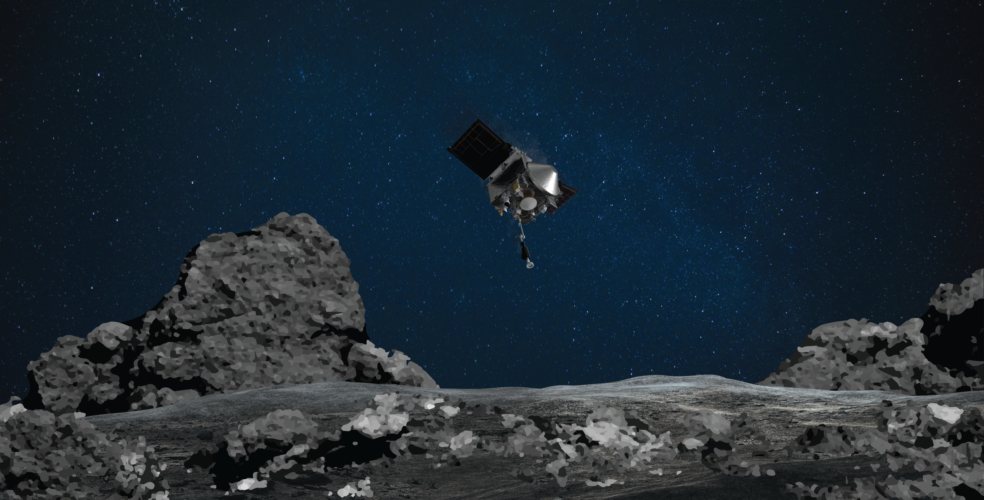
Launched from Cape Canaveral in September 2016, the so-called Origins, Spectral Interpretation, Resource Identification, Security, Regolith Explorer (OSIRIS-REx) probe has been orbiting the asteroid since December 2018.
NASA scientists are hoping that during its brief landing on the surface of the asteroid, which took place on 20th October 2020, the spacecraft was able to gather material that could help advance our understanding of the early solar system.
Hailing the achievement NASA Administrator Jim Bridenstine said: “This amazing first for NASA demonstrates how an incredible team from across the country came together and persevered through incredible challenges to expand the boundaries of knowledge. Our industry, academic, and international partners have made it possible to hold a piece of the most ancient solar system in our hands.”
During the manoeuvre the spacecraft fired its thrusters to nudge itself out of orbit around Bennu before extending the shoulder, then elbow, then wrist of its 11-foot (3.35-metre) sampling arm, known as the Touch-And-Go Sample Acquisition Mechanism (TAGSAM).
After a four-hour descent, at an altitude of approximately 410 feet (125 metres), the spacecraft executed a so-called “checkpoint” burn, the first of two manoeuvres to allow it to precisely target the sample collection site, known as “Nightingale.”
Ten minutes later, the spacecraft fired its thrusters for a second “Matchpoint” burn to slow its descent and match the asteroid’s rotation at the time of contact.
It then continued a treacherous, 11-minute coast past a boulder the size of a two-story building, nicknamed “Mount Doom,” to touch down in a clear spot in a crater on Bennu’s northern hemisphere.
Real-time data indicates the TAGSAM successfully contacted the surface and fired a burst of nitrogen gas that should have stirred up dust and pebbles on Bennu’s surface, some of which should have been captured in the TAGSAM sample collection head.
It will take about a week for the OSIRIS-REx team to confirm how much sample the spacecraft collected. If Tuesday’s sample collection event, known as “Touch-And-Go” (TAG), provided enough of a sample, mission teams will command the spacecraft to begin stowing the primordial cargo to begin its journey back to Earth in March 2021. Otherwise, they will prepare for another attempt in January.
Mars 2020 mission gears up for a red planet return
Detecting and deflecting the asteroid threat
To store the sample, engineers will command the robotic arm to place the sample collector head into the Sample Return Capsule (SRC), located in the body of the spacecraft. The sample arm will then retract to the side of the spacecraft for the final time, the SRC will close, and the spacecraft will prepare for its departure from Bennu in March 2021 — this is the next time Bennu will be properly aligned with Earth for the most fuel-efficient return flight.
The spacecraft is scheduled to return to Earth September 24, 2023, when it will parachute the SRC into Utah's west desert where scientists will be waiting to collect it.




Red Bull makes hydrogen fuel cell play with AVL
Formula 1 is an anachronistic anomaly where its only cutting edge is in engine development. The rules prohibit any real innovation and there would be...